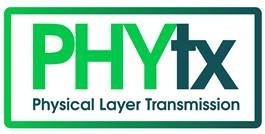Active Non-PS assigned Projects
WT/MD/SD# Projects Abstract Related Contributions Editors none n/a n/a n/a n/a
Active FANCE Projects
WT/MD/SD# FANCE Projects Abstract Related Contributions Editors WT-476 Performance Test Plan for use of G.hn technology in access scenarios The goal is to provide performance requirements between a G.hn Aggregation Multiplexer (GAM) and one or more G.hn Network Terminations (GNTs). The focus is on the device level (DLL and PHY) testing, similar to how TR-380 is defined. This performance test plan will include test setup information, equipment configuration requirements, test procedures, and performance requirements for each test case. WT-476
This document is intended to provide a certification test plan for ITU‑T Recommendation G.9700 “Fast access to subscriber terminals (G.fast) – Power spectral density specification” and G.9701 “Fast access to subscriber terminals (G.fast) – Physical layer specification”. This IR-337 is specifically conceived for the basic interoperability objectives of the Broadband Forum G.fast Certification Program. Technical content in this test plan includes test setup information, equipment configuration requirements, test procedures, and pass/fail requirements for each test case. Issue 4 intends to add Robust Management Channel Recovery (RMCR) and sub-carrier masking tests, tests for Low power operation and tests for accuracy and updating of reported G.fast parameters. With short copper loops required by G.fast Distribution Point Units (DPUs) that push the deployment of the DPU/MDUs closer to the customer premise, local power and forward power may not be viable to cost or location. To power the DPU, power will come from the customer premises location over the copper pair; this is referred to as Reverse Power Feed (RPF). This document specifies tests for the RPF functions of a DPU and the customer premises’ Power Supply Equipment (PSE) either as a stand-alone device or as a function integrated in a G.fast Network Termination. Issue 3 will define a set of RPF-over-coax functional and safety test cases for the Power Source Equipment (PSE) implemented according to ETSI specification TS 101 548-2, either as a stand-alone device or as a function integrated in the G.fast (G.9700 and G.9701) network termination, and reversely powered DPU implementations. It will include also RPF integrated in G.hn Access and MoCA Access network termination.Active Gfast and RPF Projects
WT/MD/SD# Bonding Projects Abstract Related Contributions Editors G.fast Certification Test Plan DTP-337 OD-335 G.fast Interop Plugfest Test Plan Interoperability among multiple chipsets and systems will be critical to the success of G.fast. This document defines a suite of basic physical layer tests for G.fast. The intent is to provide a structure for vendor-to-vendor interoperability tests, known as "Plugfests". OD-335 WT-338i3 Reverse Power Feed (RPF) Test Plan WT-338
Completed or Inactive Project Streams
- These can be found on the PHYtx - Archived Project Streams and Projects page
